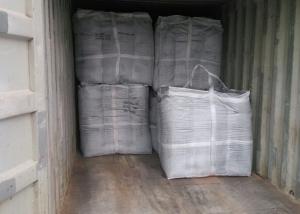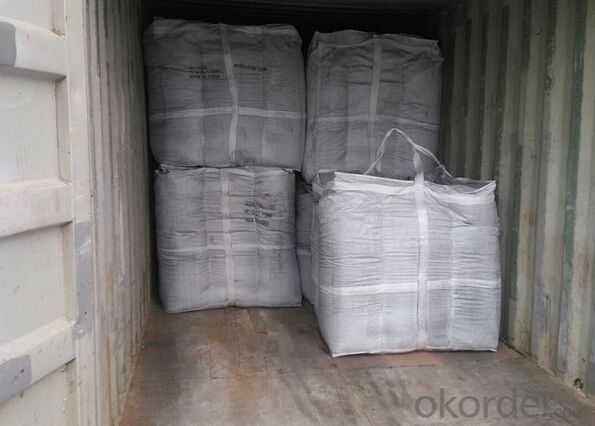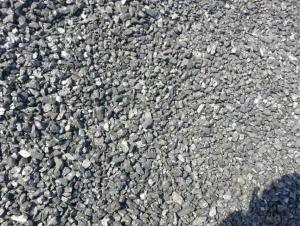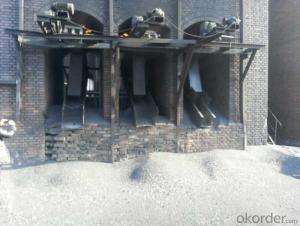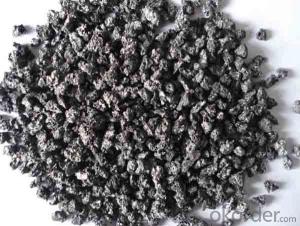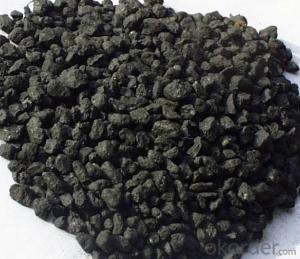Hot Sale High Sulfur Low Ash China CNBM Coke CPC
- Loading Port:
- Tianjin
- Payment Terms:
- TT or LC
- Min Order Qty:
- 20 m.t.
- Supply Capability:
- 3000 m.t./month
OKorder Service Pledge
OKorder Financial Service
You Might Also Like
Quick Details
Place of Origin: Hebei, China (Mainland)
Application: carben addtitives
Dimensions: 1-3mm,1-8mm1-5mm,1-2mm,1-2.5mm,20-40mesh,40-80mesh,80mesh,100mesh,200m
Chemical Composition: calcined coke
grade: briquette
color: black
shape: powder or block
Packaging & Delivery
| Packaging Details: | 50kg/bag 200kg/bag 500kg/bag 1000kg/bag Or Also can be customized according to customer's request |
|---|---|
| Delivery Detail: | 20 days after payment |
Specifications
Hot Sale High Sulfur Low Ash China CNBM Coke CPC
Petroleum coke products can be divided into needle coke, sponge coke, projectile coke and coke breeze four kinds.
Calcined Petroleum Coke
F.C.: 98.5%MIN
ASH: 0.8% MAX
V.M.: 0.7%MAX
S:0.5%MAX
Moisture: 0.5%MAX
Structure
Hot Sale High Sulfur Low Ash China CNBM Coke CPC
Shape: granule
Dimensions: 0-1mm, 1-5mm, 1-6mm, 2-8mm, etc
Product Type: Carbon Additive
C Content (%): 98-99.5% MIN
Working Temperature: -
S Content (%): 0.5%-0.7%MAX
Ash Content (%): 0.7%MAX
Volatile:0.8%MAX
Moisture: 0.5% MAX
ADVANTAGE: low ash & sulfur
COLOR: Black
Feature
Hot Sale High Sulfur Low Ash China CNBM Coke CPC
Physics and chemistry performance :
Unit | Index | |||||
No.1 | No.2 | No.3 |
| |||
Density | g/cm3 | 2.04 | 2.00 | 2.00 | ||
sulphur content | %≤ | 0.5 | 1.0 | 2.5 | ||
volatility | %≤ | 0.5 | 0.5 | 0.5 | ||
ash content | %≤ | 0.5 | 0.5 | 0.5 | ||
moisture | %≤ | 0.3 | 0.5 | 0.5 | ||
charcoal | %≤ | 98.5 | 98.0 | 98.0 | ||
Image
Hot Sale High Sulfur Low Ash China CNBM Coke CPC
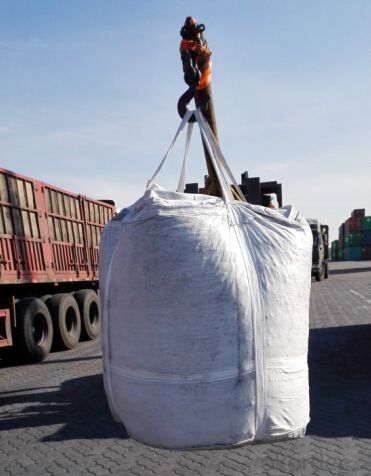
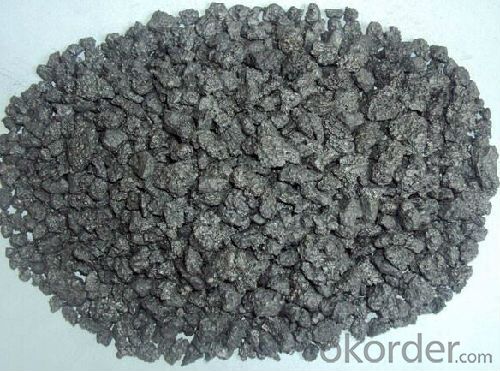
FAQ:
Hot Sale High Sulfur Low Ash China CNBM Coke CPC
How to classify calcined petroleum coke?
1) According to difference of sulfur content, can be divided into high sulfur coke (sulfur content more than 4%), sulphur in coke sulfur content (2% 4%) and low sulfur coke (sulfur content below 2%).
2) Petroleum coke products can be divided into needle coke, sponge coke, projectile coke and coke breeze four kinds:
3) Needle coke, has obvious needle-like structure and fiber texture, mainly used for steel-making in high power and ultra-high power graphite electrode. As a result of needle coke in sulfur content, ash content, volatile matter and true density and so on have strict quality requirements, so the production process of needle coke and raw materials have special requirements.
4) The sponge coke, high chemical reactivity, low content of impurities, mainly used in the aluminum industry and carbon industry.
5) Focal or spherical coke: the projectile shape is round, diameter 0.6-30 mm, usually from the production of high sulphur, high asphaltic residual oil, can only be used as industrial fuel power generation, cement etc.
6) Coke breeze: fluidized coking process, the fine particles (0.1- 0.4 mm) in diameter, high volatile, high expansion coefficient, cannot be directly used for electrode preparation and carbon industry.
Advantage:
Hot Sale High Sulfur Low Ash China CNBM Coke CPC
1. High quality and competitive price.
2. Timely delivery.
3. If any item you like. Please contact us.
Your sincere inquiries are typically answered within 24 hours.
- Q: What are the health effects of carbon pollution?
- Carbon pollution, specifically in the form of carbon dioxide (CO2) emissions, has a range of health effects on both humans and the environment. The primary health concern associated with carbon pollution is its contribution to climate change. As CO2 is a greenhouse gas, it traps heat in the Earth's atmosphere, leading to global warming and subsequently altering weather patterns. This can result in more frequent and severe heatwaves, hurricanes, and other extreme weather events. These events have direct and indirect health impacts, including heat-related illnesses, injuries, displacement, and the spread of infectious diseases. Furthermore, carbon pollution is closely linked to air pollution, which has significant health consequences. The burning of fossil fuels, such as coal and oil, releases not only CO2 but also a range of toxic air pollutants, including sulfur dioxide, nitrogen oxides, particulate matter, and volatile organic compounds. These pollutants can cause respiratory problems, such as asthma, bronchitis, and other chronic obstructive pulmonary diseases (COPD). Additionally, they can trigger cardiovascular issues and increase the risk of heart attacks and strokes. The health effects of carbon pollution are not limited to the respiratory and cardiovascular systems. Increased temperatures and changes in precipitation patterns can also impact water and food supplies, leading to waterborne diseases, reduced crop yields, malnutrition, and food insecurity. Moreover, the environmental consequences of carbon pollution, such as deforestation and ocean acidification, further exacerbate health risks. Deforestation reduces the availability of clean air and the natural carbon sinks that absorb CO2, while ocean acidification damages marine ecosystems, affecting the availability of fish and other seafood, which are vital sources of nutrition for many communities. To mitigate the health effects of carbon pollution, it is essential to reduce greenhouse gas emissions by transitioning to cleaner and renewable energy sources, implementing energy-efficient practices, and adopting sustainable land-use and agricultural practices. Additionally, investing in healthcare systems and public health infrastructure to address the direct and indirect health impacts of carbon pollution is crucial.
- Q: What's the reason for grading? What about the use of composites? What's the difference?
- 1, carbon fiber has a benzene ring structure, making it difficult to rotate the molecular chain. A polymer molecule cannot fold and stretch to form a rodlike structure, thus giving fibers a high modulus.The linear structure of carbon fiber polymers allows molecules to be arranged so closely that a large number of polymer molecules can be accommodated in a unit volume. This high density makes the fibers stronger.
- Q: What are the impacts of carbon emissions on coral reefs?
- The impacts of carbon emissions on coral reefs are significant and detrimental. Increased levels of carbon dioxide in the atmosphere lead to ocean acidification, which disrupts the delicate balance of the reef ecosystem. Acidic conditions hinder the ability of corals to build their calcium carbonate skeletons, making them more vulnerable to erosion and bleaching. Additionally, rising temperatures caused by carbon emissions contribute to coral bleaching events, where corals expel their symbiotic algae, leading to their eventual death. Overall, carbon emissions pose a major threat to coral reefs, jeopardizing their biodiversity and ecological functions.
- Q: What are the consequences of increased carbon emissions on coral reefs?
- The consequences of increased carbon emissions on coral reefs are highly detrimental. Elevated carbon dioxide levels in the atmosphere lead to ocean acidification, which negatively impacts the ability of corals to build their calcium carbonate skeletons. This results in weakened and brittle coral structures, making them more susceptible to damage from storms and other environmental stressors. Additionally, higher temperatures caused by carbon emissions contribute to coral bleaching events, where corals expel the symbiotic algae that provide them with essential nutrients and vibrant colors. These combined effects of ocean acidification and warming ultimately lead to significant coral reef degradation, loss of biodiversity, and the decline of ecosystem services provided by these valuable marine habitats.
- Q: How does carbon affect the formation of haze?
- Carbon plays a significant role in the formation of haze due to its ability to interact with other pollutants and atmospheric conditions. When carbon-containing compounds, such as fossil fuel emissions or organic matter from wildfires, are released into the atmosphere, they undergo chemical reactions with gases like nitrogen oxides and volatile organic compounds. These reactions result in the formation of secondary organic aerosols (SOAs), which are tiny particles suspended in the air. These SOAs can contribute to haze formation by scattering and absorbing sunlight, reducing visibility and creating a hazy appearance. The carbon particles can also serve as condensation nuclei, attracting other pollutants and water vapor, leading to the formation of larger particles and subsequently haze. Additionally, the interaction between carbon and atmospheric moisture can result in the formation of secondary organic aerosol particles that contribute to haze formation. Furthermore, carbon particles can contribute to the formation of photochemical smog, which is a type of haze characterized by high levels of ozone. Carbon-containing pollutants can react with sunlight and other pollutants, leading to the production of ozone. This ozone, along with other pollutants, can contribute to the formation of haze and reduce air quality. In summary, carbon affects the formation of haze by contributing to the formation of secondary organic aerosols, serving as condensation nuclei, and promoting the production of ozone. Understanding the role of carbon in haze formation is crucial for implementing effective air pollution control measures and mitigating the impacts of haze on human health and the environment.
- Q: How does deforestation affect carbon levels?
- Deforestation has a significant impact on carbon levels in the atmosphere. Trees play a crucial role in the carbon cycle by absorbing carbon dioxide (CO2) through photosynthesis and storing it in their trunks, branches, leaves, and roots. When forests are cleared or burned, this stored carbon is released back into the atmosphere as CO2, contributing to the greenhouse effect and climate change. Deforestation not only reduces the number of trees available to absorb CO2 but also disrupts the natural balance of the carbon cycle. Forests act as carbon sinks, meaning they absorb more CO2 than they release, helping to regulate the Earth's climate. When forests are cut down, the carbon stored in their biomass is rapidly released, exacerbating the problem of excess CO2 in the atmosphere. In addition to the immediate release of carbon, deforestation also impacts the long-term carbon storage capacity of the planet. Young trees and newly regrown forests have a lower carbon storage capacity compared to older, mature forests. Therefore, when forests are cleared and replaced with young vegetation or non-forest land uses, the ability to absorb and store carbon is greatly reduced. The consequences of increased carbon levels in the atmosphere are far-reaching. Carbon dioxide is a greenhouse gas that traps heat in the Earth's atmosphere, contributing to global warming and climate change. Rising temperatures have a cascade of effects, including increased frequency and intensity of extreme weather events, rising sea levels, and disruptions to ecosystems and biodiversity. To mitigate the impact of deforestation on carbon levels, it is crucial to prioritize sustainable forest management practices and reforestation efforts. Protecting existing forests and promoting afforestation and reforestation can help restore the carbon-absorbing capacity of the planet and contribute to global efforts in combating climate change.
- Q: How is carbon used in the production of fertilizers?
- Carbon is used in the production of fertilizers as it serves as an essential component in the synthesis of organic fertilizers. Carbon-based materials, such as compost, manure, and plant residues, are used to create organic fertilizers through a process called decomposition or composting. These organic fertilizers, rich in carbon, provide plants with necessary nutrients and improve soil fertility, ultimately promoting healthy plant growth and productivity.
- Q: How does carbon impact the global water cycle?
- The global water cycle can be significantly influenced by carbon through various mechanisms. One major way in which carbon affects the water cycle is through the process of photosynthesis. During photosynthesis, plants and trees absorb carbon dioxide from the atmosphere and convert it into oxygen and glucose. This not only contributes to the carbon cycle but also plays a vital role in the water cycle. When plants undergo photosynthesis, they release water vapor into the atmosphere via small pores called stomata. This water vapor contributes to the overall humidity in the atmosphere, leading to increased cloud formation. Clouds, in turn, play a critical part in the water cycle as they contain condensed water droplets that eventually precipitate. Furthermore, carbon dioxide is a greenhouse gas that contributes to global warming and climate change. As the Earth's temperature rises due to increased levels of carbon dioxide, it has an impact on the water cycle as well. Warmer temperatures can result in higher rates of evaporation, leading to more water evaporating from oceans, rivers, and lakes. This excess moisture in the atmosphere can lead to more intense rainfall events, causing floods and other extreme weather phenomena. Moreover, carbon dioxide can affect the acidity of water bodies. When carbon dioxide dissolves in water, it forms carbonic acid, which can lower the pH of the water. This process, known as ocean acidification, can have detrimental effects on marine life, especially organisms that rely on calcium carbonate for their shells and skeletons. These impacts can disrupt ecosystems' balance and have long-term consequences for the health and functioning of the global water cycle. To summarize, carbon exerts a profound influence on the global water cycle through processes like photosynthesis, greenhouse gas emissions, and ocean acidification. Understanding these interactions is vital for managing the environmental effects of carbon and ensuring the sustainability of the water cycle.
- Q: What is the primary source of carbon monoxide in the atmosphere?
- The primary source of carbon monoxide in the atmosphere is the incomplete combustion of fossil fuels, such as coal, oil, and gas, as well as biomass burning.
- Q: What are the different types of carbon-based composites?
- There are several different types of carbon-based composites, each with unique properties and applications. Some of the most common types include carbon fiber reinforced polymers (CFRPs), carbon nanotube composites, and carbon fiber reinforced ceramics. Carbon fiber reinforced polymers (CFRPs) are perhaps the most well-known and widely used carbon-based composites. They consist of carbon fibers embedded in a polymer matrix, such as epoxy resin. CFRPs are lightweight, yet incredibly strong and stiff, making them ideal for applications where weight reduction and high strength are crucial, such as aerospace, automotive, and sporting goods industries. Carbon nanotube composites are another type of carbon-based composite that have gained significant attention in recent years. Carbon nanotubes are cylindrical structures made of carbon atoms arranged in a hexagonal lattice. When incorporated into a composite material, they enhance its mechanical, thermal, and electrical properties. Carbon nanotube composites have potential applications in fields such as electronics, energy storage, and structural materials. Carbon fiber reinforced ceramics combine the high strength and stiffness of carbon fibers with the exceptional high-temperature resistance of ceramics. These composites are commonly used in industries that require materials capable of withstanding extreme temperatures, such as aerospace, defense, and nuclear sectors. Carbon fiber reinforced ceramics offer an excellent balance between strength, thermal stability, and low weight. Other types of carbon-based composites include carbon fiber reinforced metals, where carbon fibers are embedded in a metal matrix, and graphene composites, which incorporate graphene sheets into a polymer or metal matrix. These composites offer unique properties such as high electrical conductivity, thermal stability, and mechanical strength, opening up possibilities for applications in areas like electronics, energy storage, and structural materials. Overall, carbon-based composites offer a diverse range of properties and applications, making them invaluable materials in various industries that require lightweight, strong, and durable materials.
Send your message to us
Hot Sale High Sulfur Low Ash China CNBM Coke CPC
- Loading Port:
- Tianjin
- Payment Terms:
- TT or LC
- Min Order Qty:
- 20 m.t.
- Supply Capability:
- 3000 m.t./month
OKorder Service Pledge
OKorder Financial Service
Similar products
Hot products
Hot Searches
